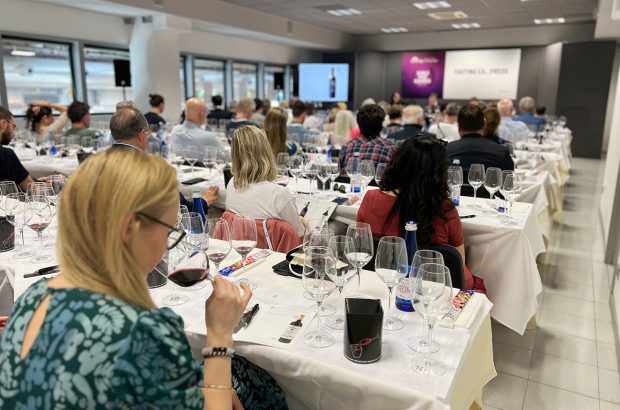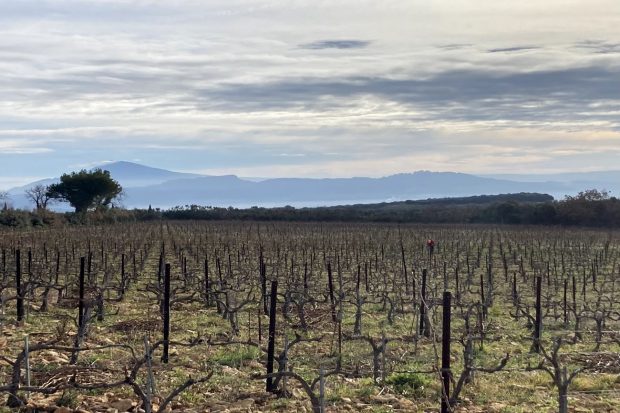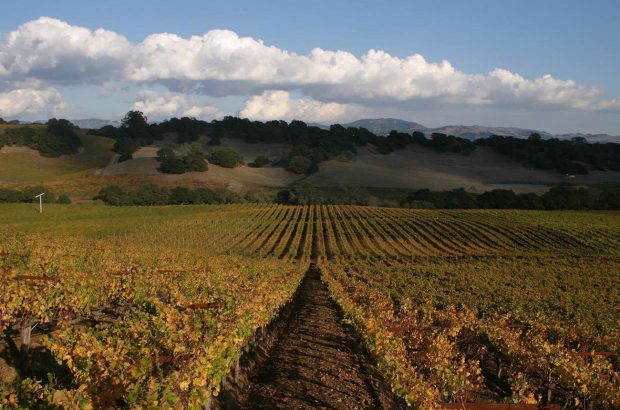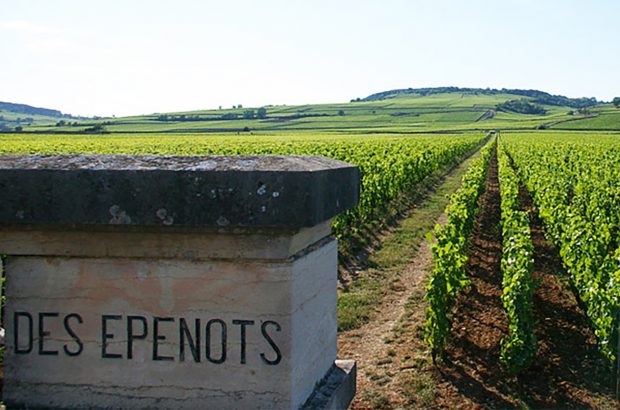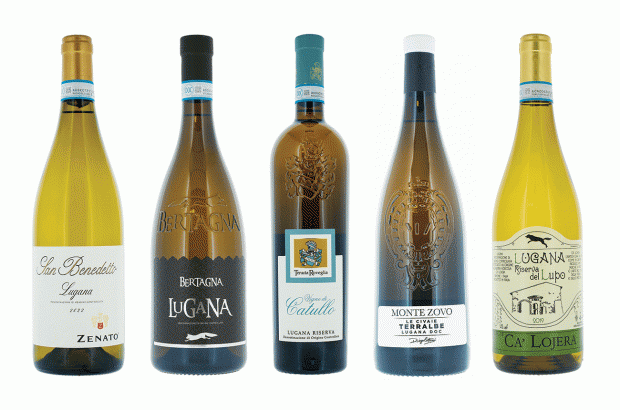Considering it has one of the oldest viticultural heritages in the world, and vies for top position with France every year as the leading producer of wine by volume, interest in wine investment is a surprisingly recent phenomenon.
One reason for this is that – unlike the established secondary markets for fine Bordeaux, Burgundy, Champagne and Rhône – only two of Italy’s 20 winemaking regions produce large proportions of ‘fine wine’: Tuscany and Piedmont.
{"content":"PC9wPgo8aDM+PHN0cm9uZz5UdXNjYW55PC9zdHJvbmc+PC9oMz4KPHA+VHVzY2FueSBoYXMgbGVkIHRoZSB3YXkgZm9yIEl0YWxpYW4gZmluZSB3aW5lIHNpbmNlIHRoZSBhZHZlbnQgb2YgdGhlIFN1cGVyVHVzY2FucyBpbiB0aGUgMTk3MHMuPC9wPgo8cD5UaGUgZmlyc3Qgbm90YWJsZSBTdXBlclR1c2NhbiB3YXMgdGhlIENhYmVybmV0IFNhdXZpZ25vbi1iYXNlZCBTYXNzaWNhaWEgaW4gQm9sZ2hlcmkuIE1hZGUgZm9yIHllYXJzIGZvciBwcml2YXRlIGNvbnN1bXB0aW9uIGJ5IG93bmVyIE1hcmNoZXNlIE1hcmlvIEluY2lzYSBkZWxsYSBSb2NjaGV0dGEsIGl0IHdhcyBmaW5hbGx5IHJlbGVhc2VkIG9udG8gdGhlIG1hcmtldCBpbiAxOTcxICh0aGUgZmFtZWQgMTk2OCB2aW50YWdlKS48L3A+CjxwPjxkaXYgY2xhc3M9ImFkLWNvbnRhaW5lciBhZC1jb250YWluZXItLW1vYmlsZSI+PGRpdiBpZD0icG9zdC1pbmxpbmUtMiIgY2xhc3M9ImlwYy1hZHZlcnQiPjwvZGl2PjwvZGl2PjwvcD4KPHA+VGlnbmFuZWxsbyBmb2xsb3dlZCBzaG9ydGx5IGFmdGVyOyBtYWRlIGJ5IFBpZXJvIEFudGlub3JpLCBNYXJpb+KAmXMgbmVwaGV3LCBpdCB3YXMgdGhlIGZpcnN0IENoaWFudGkgQ2xhc3NpY28tc3R5bGUgd2luZSBtYWRlIGVudGlyZWx5IGZyb20gbm9ibGUgcmVkIHZhcmlldGllcyBhbmQgYWdlZCBpbiBiYXJyaXF1ZXMuPC9wPgo8ZGl2IGlkPSJhdHRhY2htZW50XzQ1MjM5MCIgc3R5bGU9IndpZHRoOiA2NDBweCIgY2xhc3M9IndwLWNhcHRpb24gYWxpZ25ub25lIj48aW1nIGFyaWEtZGVzY3JpYmVkYnk9ImNhcHRpb24tYXR0YWNobWVudC00NTIzOTAiIGNsYXNzPSJsYXp5bG9hZCBibHVyLXVwIHNpemUtbGFyZ2Ugd3AtaW1hZ2UtNDUyMzkwIiBzcmM9Imh0dHBzOi8vd3d3LmRlY2FudGVyLmNvbS93cC1jb250ZW50L3RoZW1lcy9zaW1iYS10aGVtZS9hc3NldHMvaW1hZ2VzL3BsYWNlaG9sZGVyLnBuZyIgZGF0YS1zcmM9Imh0dHBzOi8va2V5YXNzZXRzLnRpbWVpbmN1ay5uZXQvaW5zcGlyZXdwL2xpdmUvd3AtY29udGVudC91cGxvYWRzL3NpdGVzLzM0LzIwMjEvMDEvVGlnbmFuZWxsby1ib3R0bGVzLTYzMHg0MjAuanBnIiBhbHQ9IlRpZ25hbmVsbG8gYm90dGxlcyIgd2lkdGg9IjYzMCIgaGVpZ2h0PSI0MjAiIGRhdGEtc2l6ZXM9ImF1dG8iIGRhdGEtc3Jjc2V0PSJodHRwczovL2tleWFzc2V0cy50aW1laW5jdWsubmV0L2luc3BpcmV3cC9saXZlL3dwLWNvbnRlbnQvdXBsb2Fkcy9zaXRlcy8zNC8yMDIxLzAxL1RpZ25hbmVsbG8tYm90dGxlcy02MzB4NDIwLmpwZyA2MzB3LCBodHRwczovL2tleWFzc2V0cy50aW1laW5jdWsubmV0L2luc3BpcmV3cC9saXZlL3dwLWNvbnRlbnQvdXBsb2Fkcy9zaXRlcy8zNC8yMDIxLzAxL1RpZ25hbmVsbG8tYm90dGxlcy0zMDB4MjAwLmpwZyAzMDB3LCBodHRwczovL2tleWFzc2V0cy50aW1laW5jdWsubmV0L2luc3BpcmV3cC9saXZlL3dwLWNvbnRlbnQvdXBsb2Fkcy9zaXRlcy8zNC8yMDIxLzAxL1RpZ25hbmVsbG8tYm90dGxlcy0xMzV4OTAuanBnIDEzNXcsIGh0dHBzOi8va2V5YXNzZXRzLnRpbWVpbmN1ay5uZXQvaW5zcGlyZXdwL2xpdmUvd3AtY29udGVudC91cGxvYWRzL3NpdGVzLzM0LzIwMjEvMDEvVGlnbmFuZWxsby1ib3R0bGVzLTMyMHgyMTMuanBnIDMyMHcsIGh0dHBzOi8va2V5YXNzZXRzLnRpbWVpbmN1ay5uZXQvaW5zcGlyZXdwL2xpdmUvd3AtY29udGVudC91cGxvYWRzL3NpdGVzLzM0LzIwMjEvMDEvVGlnbmFuZWxsby1ib3R0bGVzLTYyMHg0MTMuanBnIDYyMHcsIGh0dHBzOi8va2V5YXNzZXRzLnRpbWVpbmN1ay5uZXQvaW5zcGlyZXdwL2xpdmUvd3AtY29udGVudC91cGxvYWRzL3NpdGVzLzM0LzIwMjEvMDEvVGlnbmFuZWxsby1ib3R0bGVzLmpwZyA5MDB3IiBzaXplcz0iKG1heC13aWR0aDogNjMwcHgpIDEwMHZ3LCA2MzBweCIgLz48cCBpZD0iY2FwdGlvbi1hdHRhY2htZW50LTQ1MjM5MCIgY2xhc3M9IndwLWNhcHRpb24tdGV4dCI+VGlnbmFuZWxsbyBib3R0bGVzPC9wPjwvZGl2Pgo8cD5BIHNsZXcgb2Ygb3RoZXIgU3VwZXJUdXNjYW5zIHN1YnNlcXVlbnRseSBoaXQgdGhlIG1hcmtldCBvdmVyIHRoZSBuZXh0IGZldyB5ZWFycywgbWFkZSBieSBwcm9kdWNlcnMgY29uZmlkZW50IHRoYXQgdGhleSBjb3VsZCBwcm9kdWNlIGJldHRlciB3aW5lcyBvdXRzaWRlIHRoZSByZXN0cmljdGl2ZSBET0MgbGVnaXNsYXRpb24uPC9wPgo8ZGl2IGNsYXNzPSJhZC1jb250YWluZXIgYWQtY29udGFpbmVyLS1tb2JpbGUiPjxkaXYgaWQ9InBvc3QtaW5saW5lLTMiIGNsYXNzPSJpcGMtYWR2ZXJ0Ij48L2Rpdj48L2Rpdj4KPHA+V2l0aG91dCBhIHJlY29nbmlzYWJsZSBkZW5vbWluYXppb25lIG9uIHRoZSBsYWJlbCB0byBmYWxsIGJhY2sgb24sIGhvd2V2ZXIsIGFuZCB3aXRob3V0IHRoZSBzdXBwb3J0IG9mIHRoZSByZWdpb27igJlzIGNvbnNvcnppb3MgKHJlcHJlc2VudGF0aXZlIGJvZGllcyksIHRoZXNlIHByb2R1Y2VycyByZWxpZWQgb24gdGhlaXIgb3duIG1hcmtldGluZyBzdHJhdGVnaWVzIGFuZCBpbmRpdmlkdWFsIHJlcHV0YXRpb25zLiBEZXNwaXRlIHRoZSBjaGFsbGVuZ2VzLCBTdXBlclR1c2NhbnMgYmVnYW4gdG8gZ2FpbiBwb3B1bGFyaXR5LCB3ZWxjb21lZCBhcyBleG90aWMgYWx0ZXJuYXRpdmVzIHRvIHRoZSBjZWxsYXIgc3RhcGxlcyBvZiBCb3JkZWF1eCBhbmQgQnVyZ3VuZHkuPC9wPgo8cD5CeSB0aGUgZWFybHkgMjAwMHMsIFN1cGVyVHVzY2FucyB3ZXJlIGluIHZvZ3VlIGFuZCBoaWdobHkgZGVzaXJhYmxlLjwvcD4KPGRpdiBjbGFzcz0iYWQtY29udGFpbmVyIGFkLWNvbnRhaW5lci0tbW9iaWxlIj48ZGl2IGlkPSJwb3N0LWlubGluZS00IiBjbGFzcz0iaXBjLWFkdmVydCI+PC9kaXY+PC9kaXY+CjxwPkluIDIwMTEsIHRoZSBmaW5lIHdpbmUgbWFya2V0IHN1ZmZlcmVkIGEgMCUgbWFqb3IgY29ycmVjdGlvbiwgc2hlZGRpbmcgYXBwcm94aW1hdGVseSBvbmUgdGhpcmQgb2YgaXRzIHZhbHVlIG92ZXIgdGhlIGNvdXJzZSBvZiB0aGUgc3Vic2VxdWVudCB0aHJlZSB5ZWFycy4gVGhlIGJpZ2dlc3QgaW1wYWN0IG9mIHRoaXMgd2FzIGZlbHQgYnkgQm9yZGVhdXggd2hpY2gsIGluIDIwMTAsIGhhZCBhY2NvdW50ZWQgZm9yIGEgcmVjb3JkIDk1LjclIG9mIGFsbCB0cmFkZXMgYnkgdmFsdWUgJiM4MjExOyBidXQgYnkgdGhlIHRpbWUgb2Ygd3JpdGluZyBpbiBEZWNlbWJlciAyMDIwLCB0aGUgcmVnaW9u4oCZcyB3aW5lcyBhY2NvdW50IGZvciBqdXN0IDQyLjIlLCBhY2NvcmRpbmcgdG8gZmlndXJlcyBmcm9tIExpdi1leC48L3A+CjxkaXYgaWQ9ImF0dGFjaG1lbnRfNDUyMzg1IiBzdHlsZT0id2lkdGg6IDY0MHB4IiBjbGFzcz0id3AtY2FwdGlvbiBhbGlnbm5vbmUiPjxpbWcgYXJpYS1kZXNjcmliZWRieT0iY2FwdGlvbi1hdHRhY2htZW50LTQ1MjM4NSIgY2xhc3M9Imxhenlsb2FkIGJsdXItdXAgc2l6ZS1sYXJnZSB3cC1pbWFnZS00NTIzODUiIHNyYz0iaHR0cHM6Ly93d3cuZGVjYW50ZXIuY29tL3dwLWNvbnRlbnQvdGhlbWVzL3NpbWJhLXRoZW1lL2Fzc2V0cy9pbWFnZXMvcGxhY2Vob2xkZXIucG5nIiBkYXRhLXNyYz0iaHR0cHM6Ly9rZXlhc3NldHMudGltZWluY3VrLm5ldC9pbnNwaXJld3AvbGl2ZS93cC1jb250ZW50L3VwbG9hZHMvc2l0ZXMvMzQvMjAyMS8wMS9vcm5lbGxhaWFib3R0bGVzLTYzMHg2MzAuanBnIiBhbHQ9Ik9ybmVsbGFpYSBib3R0bGVzIiB3aWR0aD0iNjMwIiBoZWlnaHQ9IjYzMCIgZGF0YS1zaXplcz0iYXV0byIgZGF0YS1zcmNzZXQ9Imh0dHBzOi8va2V5YXNzZXRzLnRpbWVpbmN1ay5uZXQvaW5zcGlyZXdwL2xpdmUvd3AtY29udGVudC91cGxvYWRzL3NpdGVzLzM0LzIwMjEvMDEvb3JuZWxsYWlhYm90dGxlcy02MzB4NjMwLmpwZyA2MzB3LCBodHRwczovL2tleWFzc2V0cy50aW1laW5jdWsubmV0L2luc3BpcmV3cC9saXZlL3dwLWNvbnRlbnQvdXBsb2Fkcy9zaXRlcy8zNC8yMDIxLzAxL29ybmVsbGFpYWJvdHRsZXMtMzAweDMwMC5qcGcgMzAwdywgaHR0cHM6Ly9rZXlhc3NldHMudGltZWluY3VrLm5ldC9pbnNwaXJld3AvbGl2ZS93cC1jb250ZW50L3VwbG9hZHMvc2l0ZXMvMzQvMjAyMS8wMS9vcm5lbGxhaWFib3R0bGVzLTEzNXgxMzUuanBnIDEzNXcsIGh0dHBzOi8va2V5YXNzZXRzLnRpbWVpbmN1ay5uZXQvaW5zcGlyZXdwL2xpdmUvd3AtY29udGVudC91cGxvYWRzL3NpdGVzLzM0LzIwMjEvMDEvb3JuZWxsYWlhYm90dGxlcy0zMjB4MzIwLmpwZyAzMjB3LCBodHRwczovL2tleWFzc2V0cy50aW1laW5jdWsubmV0L2luc3BpcmV3cC9saXZlL3dwLWNvbnRlbnQvdXBsb2Fkcy9zaXRlcy8zNC8yMDIxLzAxL29ybmVsbGFpYWJvdHRsZXMtNjIweDYyMC5qcGcgNjIwdywgaHR0cHM6Ly9rZXlhc3NldHMudGltZWluY3VrLm5ldC9pbnNwaXJld3AvbGl2ZS93cC1jb250ZW50L3VwbG9hZHMvc2l0ZXMvMzQvMjAyMS8wMS9vcm5lbGxhaWFib3R0bGVzLTU1MHg1NTAuanBnIDU1MHcsIGh0dHBzOi8va2V5YXNzZXRzLnRpbWVpbmN1ay5uZXQvaW5zcGlyZXdwL2xpdmUvd3AtY29udGVudC91cGxvYWRzL3NpdGVzLzM0LzIwMjEvMDEvb3JuZWxsYWlhYm90dGxlcy00NzB4NDcwLmpwZyA0NzB3LCBodHRwczovL2tleWFzc2V0cy50aW1laW5jdWsubmV0L2luc3BpcmV3cC9saXZlL3dwLWNvbnRlbnQvdXBsb2Fkcy9zaXRlcy8zNC8yMDIxLzAxL29ybmVsbGFpYWJvdHRsZXMuanBnIDY4MHciIHNpemVzPSIobWF4LXdpZHRoOiA2MzBweCkgMTAwdncsIDYzMHB4IiAvPjxwIGlkPSJjYXB0aW9uLWF0dGFjaG1lbnQtNDUyMzg1IiBjbGFzcz0id3AtY2FwdGlvbi10ZXh0Ij5Pcm5lbGxhaWEgYm90dGxlczwvcD48L2Rpdj4KPGRpdiBjbGFzcz0iYWQtY29udGFpbmVyIGFkLWNvbnRhaW5lci0tbW9iaWxlIj48ZGl2IGlkPSJwb3N0LWlubGluZS01IiBjbGFzcz0iaXBjLWFkdmVydCI+PC9kaXY+PC9kaXY+CjxoMz48c3Ryb25nPlRoZSByaXNlIG9mIEl0YWxpYW4gd2luZXM8L3N0cm9uZz48L2gzPgo8cD5JdCB3YXMgaW4gdGhpcyBjbGltYXRlIHRoYXQgSXRhbGlhbiB3aW5lcyBmb3VuZCBhIHRvZS1ob2xkIG9uIHRoZSBmaW5lIHdpbmUgbWFya2V0LiBJbiAyMDExLCBJdGFseSByZXByZXNlbnRlZCBsZXNzIHRoYW4gMiUgb2YgbWFya2V0IHNoYXJlIGJ5IHZhbHVlLCBhY2NvcmRpbmcgdG8gTGl2LWV4LCBidXQgYnkgMjAxOSB0aGF0IHNoYXJlIGhhZCByaXNlbiBhYm92ZSA4JS4gVGhlIG51bWJlciBvZiBJdGFsaWFuIHdpbmVzIHRyYWRlZCBoYWQgYWxzbyBpbmNyZWFzZWQgZHJhbWF0aWNhbGx5LCBmcm9tIGZld2VyIHRoYW4gMTAwIFNLVXMgaW4gMjAxMSB0byBtb3JlIHRoYW4gODAwIGluIDIwMTkuPC9wPgo8cD5UaGlzIGluY3JlYXNlIGluIHBvcHVsYXJpdHkgYW5kIGRpdmVyc2l0eSBjYW4gYmUgbGFyZ2VseSBhdHRyaWJ1dGVkIHRvIGJ1eWVycyBzZWVraW5nIGFsdGVybmF0aXZlcyBhZnRlciBCb3JkZWF1eOKAmXMgcmVjb3JkLWhpZ2ggdmFsdWVzIGJlZ2FuIHRvIHBsdW1tZXQgaW4gbWlkLTIwMTEuPC9wPgo8cD5TdXBlclR1c2NhbnMgd2VyZSBhIG5hdHVyYWwgY2hvaWNlOiBtb3N0IOKAkyB0aG91Z2ggbm90IGFsbCDigJMgYXJlIG1hZGUgZnJvbSBCb3JkZWF1eCB2YXJpZXRpZXMgc3VjaCBhcyBDYWJlcm5ldCBTYXV2aWdub24gYW5kIENhYmVybmV0IEZyYW5jOyB0aGV5IGhhdmUgZXN0YWJsaXNoZWQgYnJhbmQgYXBwZWFsIGFraW4gdG8gQm9yZGVhdXjigJlzIGZpcnN0IGdyb3d0aHM7IGFuZCBtb3N0IEJvcmRlYXV4IGFuZCBTdXBlclR1c2NhbnMgYXJlIG1hZGUgaW4gc3VmZmljaWVudCB2b2x1bWVzIHRvIGFsbG93IHRoZW0gdG8gYmUgcmVhZGlseSBwdXJjaGFzZWQgYW5kIHRyYWRlZC4gQXQgdGhlIHRpbWUgdGhleSBhbHNvIG9mZmVyZWQgZ29vZCB2YWx1ZSBpbiBjb21wYXJpc29uIHRvIEJvcmRlYXV4LjwvcD4KPHA+PGltZyBjbGFzcz0ibGF6eWxvYWQgYmx1ci11cCBhbGlnbm5vbmUgd3AtaW1hZ2UtNDUyMDAxIHNpemUtbGFyZ2UiIHNyYz0iaHR0cHM6Ly93d3cuZGVjYW50ZXIuY29tL3dwLWNvbnRlbnQvdGhlbWVzL3NpbWJhLXRoZW1lL2Fzc2V0cy9pbWFnZXMvcGxhY2Vob2xkZXIucG5nIiBkYXRhLXNyYz0iaHR0cHM6Ly9rZXlhc3NldHMudGltZWluY3VrLm5ldC9pbnNwaXJld3AvbGl2ZS93cC1jb250ZW50L3VwbG9hZHMvc2l0ZXMvMzQvMjAyMS8wMS9TaGFyZS1vZi1JdGFsaWFuLXRyYWRlLXZhbHVlLTYzMHg0MTcuanBnIiBhbHQ9IlNoYXJlIG9mIEl0YWxpYW4gdHJhZGUgdmFsdWUiIHdpZHRoPSI2MzAiIGhlaWdodD0iNDE3IiBkYXRhLXNpemVzPSJhdXRvIiBkYXRhLXNyY3NldD0iaHR0cHM6Ly9rZXlhc3NldHMudGltZWluY3VrLm5ldC9pbnNwaXJld3AvbGl2ZS93cC1jb250ZW50L3VwbG9hZHMvc2l0ZXMvMzQvMjAyMS8wMS9TaGFyZS1vZi1JdGFsaWFuLXRyYWRlLXZhbHVlLTYzMHg0MTcuanBnIDYzMHcsIGh0dHBzOi8va2V5YXNzZXRzLnRpbWVpbmN1ay5uZXQvaW5zcGlyZXdwL2xpdmUvd3AtY29udGVudC91cGxvYWRzL3NpdGVzLzM0LzIwMjEvMDEvU2hhcmUtb2YtSXRhbGlhbi10cmFkZS12YWx1ZS0zMDB4MTk4LmpwZyAzMDB3LCBodHRwczovL2tleWFzc2V0cy50aW1laW5jdWsubmV0L2luc3BpcmV3cC9saXZlL3dwLWNvbnRlbnQvdXBsb2Fkcy9zaXRlcy8zNC8yMDIxLzAxL1NoYXJlLW9mLUl0YWxpYW4tdHJhZGUtdmFsdWUtMTM1eDg5LmpwZyAxMzV3LCBodHRwczovL2tleWFzc2V0cy50aW1laW5jdWsubmV0L2luc3BpcmV3cC9saXZlL3dwLWNvbnRlbnQvdXBsb2Fkcy9zaXRlcy8zNC8yMDIxLzAxL1NoYXJlLW9mLUl0YWxpYW4tdHJhZGUtdmFsdWUtMzIweDIxMi5qcGcgMzIwdywgaHR0cHM6Ly9rZXlhc3NldHMudGltZWluY3VrLm5ldC9pbnNwaXJld3AvbGl2ZS93cC1jb250ZW50L3VwbG9hZHMvc2l0ZXMvMzQvMjAyMS8wMS9TaGFyZS1vZi1JdGFsaWFuLXRyYWRlLXZhbHVlLTYyMHg0MTAuanBnIDYyMHcsIGh0dHBzOi8va2V5YXNzZXRzLnRpbWVpbmN1ay5uZXQvaW5zcGlyZXdwL2xpdmUvd3AtY29udGVudC91cGxvYWRzL3NpdGVzLzM0LzIwMjEvMDEvU2hhcmUtb2YtSXRhbGlhbi10cmFkZS12YWx1ZS05MjB4NjA5LmpwZyA5MjB3LCBodHRwczovL2tleWFzc2V0cy50aW1laW5jdWsubmV0L2luc3BpcmV3cC9saXZlL3dwLWNvbnRlbnQvdXBsb2Fkcy9zaXRlcy8zNC8yMDIxLzAxL1NoYXJlLW9mLUl0YWxpYW4tdHJhZGUtdmFsdWUtMTIyMHg4MDcuanBnIDEyMjB3LCBodHRwczovL2tleWFzc2V0cy50aW1laW5jdWsubmV0L2luc3BpcmV3cC9saXZlL3dwLWNvbnRlbnQvdXBsb2Fkcy9zaXRlcy8zNC8yMDIxLzAxL1NoYXJlLW9mLUl0YWxpYW4tdHJhZGUtdmFsdWUuanBnIDEzMDB3IiBzaXplcz0iKG1heC13aWR0aDogNjMwcHgpIDEwMHZ3LCA2MzBweCIgLz48L3A+CjxoMz48c3Ryb25nPkVudGVyIFBpZWRtb250IDwvc3Ryb25nPjwvaDM+CjxwPkJ5IDIwMTcsIHRoZSBmaW5lIHdpbmUgbWFya2V0IGhhZCBsYXJnZWx5IHJlY292ZXJlZDsgaG93ZXZlciwgdGhlIGxhbmRzY2FwZSB3YXMgbm8gbG9uZ2VyIGRvbWluYXRlZCBieSBCb3JkZWF1eC4gQ29sbGVjdG9ycyBkaXNpbGx1c2lvbmVkIHdpdGggQm9yZGVhdXggd2VyZSBub3Qgb25seSBwaWNraW5nIHVwIGNhc2VzIG9mIGZpbmUgSXRhbGlhbiB3aW5lLCBidXQgYWxzbyBkcml2aW5nIGRlbWFuZCBmb3IgQnVyZ3VuZHkgYXMgZGl2ZXJzaWZpY2F0aW9uIGJlY2FtZSBhIHdhdGNod29yZCBmb3Igd2luZSBpbnZlc3RtZW50LiBQcmljZXMgZm9yIHRoZSB0b3Agd2luZXMgb2YgdGhlIENvzIJ0ZSBk4oCZT3Igc29vbiB3ZW50IHN0cmF0b3NwaGVyaWMgYXMgdGhlIGZldyBjYXNlcyBvZiBlYWNoIHdpbmUgd2VyZSBzbmFwcGVkIHVwIG9uIHByZS1hbGxvY2F0aW9uLjwvcD4KPHA+QW5kIGhlcmUgYmVnaW5zIHRoZSBzdG9yeSBmb3IgUGllZG1vbnQsIHdoaWNoIHVwIHVudGlsIDIwMTcgaGFkIGxhcmdlbHkgZXNjYXBlZCB0aGUgZ2F6ZSBvZiBjb2xsZWN0b3JzLiBJbiAyMDIwLCBob3dldmVyLCB0aGUgcmVnaW9uIGFjY291bnRzIGZvciBhYm91dCA0MCUgb2YgYWxsIEl0YWxpYW4gd2luZXMgdHJhZGVkIG9uIExpdi1leCBieSB2YWx1ZS48L3A+CjxwPkFzIHdpdGggdGhlIGRpdmVyZ2VuY2UgZnJvbSBCb3JkZWF1eCB0byBTdXBlclR1c2NhbnMsIHRoZSBzcG90bGlnaHQgYmVnYW4gdG8gc2hpZnQgZnJvbSBCdXJndW5keSB0byBQaWVkbW9udCwgYXMgQnVyZ3VuZHkgYnV5ZXJzIHdlcmUgcHJpY2VkIG91dCBvZiB0aGUgbWFya2V0IGFuZCBzb3VnaHQgdmFsdWUgYW5kIGF2YWlsYWJpbGl0eSBlbHNld2hlcmUuIFNpbWlsYXJpdGllcyBiZXR3ZWVuIHRoZSBsb3ctcHJvZHVjdGlvbiwgaGlnaC1xdWFsaXR5IG1vbm92YXJpZXRhbCBOZWJiaW9sb3Mgb2YgQmFyYmFyZXNjbyBhbmQgQmFyb2xvLCBhbmQgdGhlIFBpbm90IE5vaXJzIG9mIHRoZSBDb8yCdGUgZOKAmU9yIGF0dHJhY3RlZCBidXllcnMgc2Vla2luZyBjb21wbGV4IGV4cHJlc3Npb25zIG9mIGhpZ2hseSBkZWxpbmVhdGVkIHRlcnJvaXIuPC9wPgo8ZGl2IGlkPSJhdHRhY2htZW50XzQ1MjM4MiIgc3R5bGU9IndpZHRoOiA2NDBweCIgY2xhc3M9IndwLWNhcHRpb24gYWxpZ25ub25lIj48aW1nIGFyaWEtZGVzY3JpYmVkYnk9ImNhcHRpb24tYXR0YWNobWVudC00NTIzODIiIGNsYXNzPSJsYXp5bG9hZCBibHVyLXVwIHNpemUtbGFyZ2Ugd3AtaW1hZ2UtNDUyMzgyIiBzcmM9Imh0dHBzOi8vd3d3LmRlY2FudGVyLmNvbS93cC1jb250ZW50L3RoZW1lcy9zaW1iYS10aGVtZS9hc3NldHMvaW1hZ2VzL3BsYWNlaG9sZGVyLnBuZyIgZGF0YS1zcmM9Imh0dHBzOi8va2V5YXNzZXRzLnRpbWVpbmN1ay5uZXQvaW5zcGlyZXdwL2xpdmUvd3AtY29udGVudC91cGxvYWRzL3NpdGVzLzM0LzIwMjEvMDEvR2FqYS1lc3RhdGUtNjMweDQyMC5qcGciIGFsdD0iR2FqYSB3aW5lcnksIFBpZWRtb250IiB3aWR0aD0iNjMwIiBoZWlnaHQ9IjQyMCIgZGF0YS1zaXplcz0iYXV0byIgZGF0YS1zcmNzZXQ9Imh0dHBzOi8va2V5YXNzZXRzLnRpbWVpbmN1ay5uZXQvaW5zcGlyZXdwL2xpdmUvd3AtY29udGVudC91cGxvYWRzL3NpdGVzLzM0LzIwMjEvMDEvR2FqYS1lc3RhdGUtNjMweDQyMC5qcGcgNjMwdywgaHR0cHM6Ly9rZXlhc3NldHMudGltZWluY3VrLm5ldC9pbnNwaXJld3AvbGl2ZS93cC1jb250ZW50L3VwbG9hZHMvc2l0ZXMvMzQvMjAyMS8wMS9HYWphLWVzdGF0ZS0zMDB4MjAwLmpwZyAzMDB3LCBodHRwczovL2tleWFzc2V0cy50aW1laW5jdWsubmV0L2luc3BpcmV3cC9saXZlL3dwLWNvbnRlbnQvdXBsb2Fkcy9zaXRlcy8zNC8yMDIxLzAxL0dhamEtZXN0YXRlLTEzNXg5MC5qcGcgMTM1dywgaHR0cHM6Ly9rZXlhc3NldHMudGltZWluY3VrLm5ldC9pbnNwaXJld3AvbGl2ZS93cC1jb250ZW50L3VwbG9hZHMvc2l0ZXMvMzQvMjAyMS8wMS9HYWphLWVzdGF0ZS0zMjB4MjEzLmpwZyAzMjB3LCBodHRwczovL2tleWFzc2V0cy50aW1laW5jdWsubmV0L2luc3BpcmV3cC9saXZlL3dwLWNvbnRlbnQvdXBsb2Fkcy9zaXRlcy8zNC8yMDIxLzAxL0dhamEtZXN0YXRlLTYyMHg0MTMuanBnIDYyMHcsIGh0dHBzOi8va2V5YXNzZXRzLnRpbWVpbmN1ay5uZXQvaW5zcGlyZXdwL2xpdmUvd3AtY29udGVudC91cGxvYWRzL3NpdGVzLzM0LzIwMjEvMDEvR2FqYS1lc3RhdGUuanBnIDgwMHciIHNpemVzPSIobWF4LXdpZHRoOiA2MzBweCkgMTAwdncsIDYzMHB4IiAvPjxwIGlkPSJjYXB0aW9uLWF0dGFjaG1lbnQtNDUyMzgyIiBjbGFzcz0id3AtY2FwdGlvbi10ZXh0Ij5HYWphIHdpbmVyeSwgUGllZG1vbnQ8L3A+PC9kaXY+CjxwPkEgZm9ydHVpdG91cyBydW4gb2YgZ3JlYXQgdmludGFnZXMgd2FzIHRoZSBmaW5hbCBwaWVjZSBvZiB0aGUgcHV6emxlIGZvciBQaWVkbW9udCwgc2hvd2luZyB0aGUgd2luZXMgaW4gdGhlaXIgYmVzdCBsaWdodCBhdCBleGFjdGx5IHRoZSByaWdodCB0aW1lIHRvIGltcHJlc3MgaXRzIGdyb3dpbmcgYXVkaWVuY2UuIFdoaWxlIFR1c2NhbnkgZXhwZXJpZW5jZWQgc2xpZ2h0bHkgbW9yZSB2YXJpYWJsZSBjb25kaXRpb25zLCBQaWVkbW9udCBlbmpveWVkIGEgcnVuIG9mIGV4Y2VsbGVudCB2aW50YWdlcyBiZXR3ZWVuIDIwMDYgYW5kIDIwMTEuPC9wPgo8cD5BbHRob3VnaCAyMDEyIHdhcyBkaWZmaWN1bHQsIDIwMTMgY29udGludWVkIHdoZXJlIDIwMTEgbGVmdCBvZmYgYW5kLCBhcyBTdGVwaGVuIEJyb29rIHdyb3RlIGluIGhpcyA8YSBocmVmPSJodHRwczovL3d3dy5kZWNhbnRlci5jb20vcHJlbWl1bS9iYXJvbG8tMjAxNi1yaXNlcnZhLTIwMTQtcmVwb3J0LWFuZC0xMDAtd2luZXMtdGFzdGVkLTQzNDg0Ny9odHRwczovL3d3dy5kZWNhbnRlci5jb20vcHJlbWl1bS9iYXJvbG8tMjAxNi1yaXNlcnZhLTIwMTQtcmVwb3J0LWFuZC0xMDAtd2luZXMtdGFzdGVkLTQzNDg0Ny8iPjxzdHJvbmc+QmFyb2xvIDIwMTYgcmVwb3J0IGluIE1hcmNoIDIwMjA8L3N0cm9uZz48L2E+OiDigJhFdmVuIHRob3VnaCB0aGUgMjAxNSB2aW50YWdlIGhhZCBiZWVuIG1ldCB3aXRoIGFjY2xhaW0sIGl0IHNlZW1lZCB0byBtYW55IHRoYXQgdGhlIDIwMTZzIHdlcmUgZXZlbiBiZXR0ZXIg4oCTIGFuIGltcHJlc3Npb24gY29uZmlybWVkIGFmdGVyIHRhc3RpbmcgdGhlIDIwMTYgQmFyb2xvcy7igJk8L3A+CjxwPjxpbWcgY2xhc3M9Imxhenlsb2FkIGJsdXItdXAgYWxpZ25ub25lIHdwLWltYWdlLTQ1MTk5OSBzaXplLWxhcmdlIiBzcmM9Imh0dHBzOi8vd3d3LmRlY2FudGVyLmNvbS93cC1jb250ZW50L3RoZW1lcy9zaW1iYS10aGVtZS9hc3NldHMvaW1hZ2VzL3BsYWNlaG9sZGVyLnBuZyIgZGF0YS1zcmM9Imh0dHBzOi8va2V5YXNzZXRzLnRpbWVpbmN1ay5uZXQvaW5zcGlyZXdwL2xpdmUvd3AtY29udGVudC91cGxvYWRzL3NpdGVzLzM0LzIwMjEvMDEvVHVzY2FueS12cy1QaWVkbW9udC1JbmRleC1QZXJmb3JtYW5jZS02MzB4NDE3LmpwZyIgYWx0PSJUdXNjYW55IHZzIFBpZWRtb250IEluZGV4IFBlcmZvcm1hbmNlIiB3aWR0aD0iNjMwIiBoZWlnaHQ9IjQxNyIgZGF0YS1zaXplcz0iYXV0byIgZGF0YS1zcmNzZXQ9Imh0dHBzOi8va2V5YXNzZXRzLnRpbWVpbmN1ay5uZXQvaW5zcGlyZXdwL2xpdmUvd3AtY29udGVudC91cGxvYWRzL3NpdGVzLzM0LzIwMjEvMDEvVHVzY2FueS12cy1QaWVkbW9udC1JbmRleC1QZXJmb3JtYW5jZS02MzB4NDE3LmpwZyA2MzB3LCBodHRwczovL2tleWFzc2V0cy50aW1laW5jdWsubmV0L2luc3BpcmV3cC9saXZlL3dwLWNvbnRlbnQvdXBsb2Fkcy9zaXRlcy8zNC8yMDIxLzAxL1R1c2NhbnktdnMtUGllZG1vbnQtSW5kZXgtUGVyZm9ybWFuY2UtMzAweDE5OC5qcGcgMzAwdywgaHR0cHM6Ly9rZXlhc3NldHMudGltZWluY3VrLm5ldC9pbnNwaXJld3AvbGl2ZS93cC1jb250ZW50L3VwbG9hZHMvc2l0ZXMvMzQvMjAyMS8wMS9UdXNjYW55LXZzLVBpZWRtb250LUluZGV4LVBlcmZvcm1hbmNlLTEzNXg4OS5qcGcgMTM1dywgaHR0cHM6Ly9rZXlhc3NldHMudGltZWluY3VrLm5ldC9pbnNwaXJld3AvbGl2ZS93cC1jb250ZW50L3VwbG9hZHMvc2l0ZXMvMzQvMjAyMS8wMS9UdXNjYW55LXZzLVBpZWRtb250LUluZGV4LVBlcmZvcm1hbmNlLTMyMHgyMTIuanBnIDMyMHcsIGh0dHBzOi8va2V5YXNzZXRzLnRpbWVpbmN1ay5uZXQvaW5zcGlyZXdwL2xpdmUvd3AtY29udGVudC91cGxvYWRzL3NpdGVzLzM0LzIwMjEvMDEvVHVzY2FueS12cy1QaWVkbW9udC1JbmRleC1QZXJmb3JtYW5jZS02MjB4NDEwLmpwZyA2MjB3LCBodHRwczovL2tleWFzc2V0cy50aW1laW5jdWsubmV0L2luc3BpcmV3cC9saXZlL3dwLWNvbnRlbnQvdXBsb2Fkcy9zaXRlcy8zNC8yMDIxLzAxL1R1c2NhbnktdnMtUGllZG1vbnQtSW5kZXgtUGVyZm9ybWFuY2UtOTIweDYwOS5qcGcgOTIwdywgaHR0cHM6Ly9rZXlhc3NldHMudGltZWluY3VrLm5ldC9pbnNwaXJld3AvbGl2ZS93cC1jb250ZW50L3VwbG9hZHMvc2l0ZXMvMzQvMjAyMS8wMS9UdXNjYW55LXZzLVBpZWRtb250LUluZGV4LVBlcmZvcm1hbmNlLTEyMjB4ODA3LmpwZyAxMjIwdywgaHR0cHM6Ly9rZXlhc3NldHMudGltZWluY3VrLm5ldC9pbnNwaXJld3AvbGl2ZS93cC1jb250ZW50L3VwbG9hZHMvc2l0ZXMvMzQvMjAyMS8wMS9UdXNjYW55LXZzLVBpZWRtb250LUluZGV4LVBlcmZvcm1hbmNlLmpwZyAxMzAwdyIgc2l6ZXM9IihtYXgtd2lkdGg6IDYzMHB4KSAxMDB2dywgNjMwcHgiIC8+PC9wPgo8aDM+PHN0cm9uZz5JdGFsaWFuIHdpbmUgaW52ZXN0bWVudCBwZXJmb3JtYW5jZSA8L3N0cm9uZz48L2gzPgo8cD5IYWQgeW91IHRoZSBvcHBvcnR1bml0eSB0byBwdXJjaGFzZSBhIGNhc2Ugb2YgR2lhY29tbyBDb250ZXJub+KAmXMgTW9uZm9ydGlubyBCYXJvbG8gUmlzZXJ2YSAxOTkwIDIwIHllYXJzIGFnbywgeW91IHdvdWxkIGJlIGRvaW5nIHJhdGhlciB3ZWxsIG9uIHBhcGVyIHRvZGF5LiBBdCB0aGUgdGltZSBvZiB3cml0aW5nIGluIERlY2VtYmVyIDIwMjAsIHRoZSAxOTkwIHZpbnRhZ2Ugb2YgdGhpcyBleHRyZW1lbHkgcmFyZSB3aW5lIOKAkyBvbmx5IG1hZGUgaW4gdGhlIGJlc3QgeWVhcnMgYW5kIGluIHRpbnkgcXVhbnRpdGllcyBvZiBmZXdlciB0aGFuIDYwMCBjYXNlcyDigJMgaGFzIGluY3JlYXNlZCBpbiB2YWx1ZSBieSA5MDIlIHNpbmNlIGl0IGZpcnN0IGFwcGVhcmVkIG9uIHRoZSBtYXJrZXQgaW4gU2VwdGVtYmVyIDE5OTk6IGEgcmF0aGVyIGRpenp5aW5nIHByb2ZpdCBvZiDCozEwLDgyNCBwZXIgY2FzZSAoMTJ4NzVjbCksIGJlZm9yZSBmZWVzLjwvcD4KPHA+QnV0IHVudGlsIGEgYnV5ZXIgZm9yIHlvdXIgd2luZSBpcyBmb3VuZCwgdGhlcmXigJlzIG5vIHdheSB0byByZWxlYXNlIHRoaXMgdmFsdWUg4oCTIGFuZCB0aGlzIGlzIHdoZXJlIFBpZWRtb250IGluIHBhcnRpY3VsYXIgaGFzIGhhZCBkaWZmaWN1bHR5IGluIHRoZSBwYXN0LiBJdHMgbG93IGxldmVsIG9mIHNlY29uZGFyeS1tYXJrZXQgdHJhZGluZyDigJMgYSBjb25zZXF1ZW5jZSBvZiBsb3cgcHJvZHVjdGlvbiB2b2x1bWVzIGNvbWJpbmVkIHdpdGggaGlnaCBsZXZlbHMgb2YgZG9tZXN0aWMgY29uc3VtcHRpb24g4oCTIGhhcyBtYWRlIGl0cyB3aW5lIHZhbHVlcyBwYXJ0aWN1bGFybHkgdm9sYXRpbGUsIHdpdGggbGFyZ2Ugc3ByZWFkcyBiZXR3ZWVuIGJ1eSBhbmQgc2VsbCBwcmljZXMuPC9wPgo8ZGl2IGlkPSJhdHRhY2htZW50XzQ1MjM4NiIgc3R5bGU9IndpZHRoOiA2MTBweCIgY2xhc3M9IndwLWNhcHRpb24gYWxpZ25ub25lIj48aW1nIGFyaWEtZGVzY3JpYmVkYnk9ImNhcHRpb24tYXR0YWNobWVudC00NTIzODYiIGNsYXNzPSJsYXp5bG9hZCBibHVyLXVwIHNpemUtZnVsbCB3cC1pbWFnZS00NTIzODYiIHNyYz0iaHR0cHM6Ly93d3cuZGVjYW50ZXIuY29tL3dwLWNvbnRlbnQvdGhlbWVzL3NpbWJhLXRoZW1lL2Fzc2V0cy9pbWFnZXMvcGxhY2Vob2xkZXIucG5nIiBkYXRhLXNyYz0iaHR0cHM6Ly9rZXlhc3NldHMudGltZWluY3VrLm5ldC9pbnNwaXJld3AvbGl2ZS93cC1jb250ZW50L3VwbG9hZHMvc2l0ZXMvMzQvMjAyMS8wMS9TYXNzaWNhaWEuanBnIiBhbHQ9IlNhc3NpY2FpYSIgd2lkdGg9IjYwMCIgaGVpZ2h0PSI0NTAiIGRhdGEtc2l6ZXM9ImF1dG8iIGRhdGEtc3Jjc2V0PSJodHRwczovL2tleWFzc2V0cy50aW1laW5jdWsubmV0L2luc3BpcmV3cC9saXZlL3dwLWNvbnRlbnQvdXBsb2Fkcy9zaXRlcy8zNC8yMDIxLzAxL1Nhc3NpY2FpYS5qcGcgNjAwdywgaHR0cHM6Ly9rZXlhc3NldHMudGltZWluY3VrLm5ldC9pbnNwaXJld3AvbGl2ZS93cC1jb250ZW50L3VwbG9hZHMvc2l0ZXMvMzQvMjAyMS8wMS9TYXNzaWNhaWEtMzAweDIyNS5qcGcgMzAwdywgaHR0cHM6Ly9rZXlhc3NldHMudGltZWluY3VrLm5ldC9pbnNwaXJld3AvbGl2ZS93cC1jb250ZW50L3VwbG9hZHMvc2l0ZXMvMzQvMjAyMS8wMS9TYXNzaWNhaWEtMTM1eDEwMS5qcGcgMTM1dywgaHR0cHM6Ly9rZXlhc3NldHMudGltZWluY3VrLm5ldC9pbnNwaXJld3AvbGl2ZS93cC1jb250ZW50L3VwbG9hZHMvc2l0ZXMvMzQvMjAyMS8wMS9TYXNzaWNhaWEtMzIweDI0MC5qcGcgMzIwdywgaHR0cHM6Ly9rZXlhc3NldHMudGltZWluY3VrLm5ldC9pbnNwaXJld3AvbGl2ZS93cC1jb250ZW50L3VwbG9hZHMvc2l0ZXMvMzQvMjAyMS8wMS9TYXNzaWNhaWEtNTM2eDQwMi5qcGcgNTM2dyIgc2l6ZXM9IihtYXgtd2lkdGg6IDYwMHB4KSAxMDB2dywgNjAwcHgiIC8+PHAgaWQ9ImNhcHRpb24tYXR0YWNobWVudC00NTIzODYiIGNsYXNzPSJ3cC1jYXB0aW9uLXRleHQiPlNhc3NpY2FpYTwvcD48L2Rpdj4KPHA+QW4gYW5hbHlzaXMgb2YgbWFya2V0IGRhdGEgcHJvdmlkZWQgYnkgTGl2LWV4IHJldmVhbHMgaG93IFBpZWRtb250IGhhcyBlYXRlbiBpbnRvIFR1c2NhbnnigJlzIG1vbm9wb2x5IG9uIEl0YWxpYW4gZmluZSB3aW5lcyBmb3IgaW52ZXN0bWVudC4gSW4gMjAxNiwgU3VwZXJUdXNjYW5zIGFjY291bnRlZCBmb3IgbmVhcmx5IDYwJSBvZiBJdGFsaWFuIHdpbmUgdHJhZGVzIGJ5IHZhbHVlLCBidXQgYnkgdGhlIGVuZCBvZiAyMDIwLCB0aGlzIHNoYXJlIGhhZCBiZWVuIHJlZHVjZWQgdG8ganVzdCBvdmVyIG9uZSB0aGlyZCwgd2l0aCBQaWVkbW9udCBsYXJnZWx5IGZpbGxpbmcgdGhlIHZvaWQuPC9wPgo8aDM+SW52ZXN0bWVudCBwb3RlbnRpYWw8L2gzPgo8cD5XaGVuIGNvbnNpZGVyaW5nIGludmVzdG1lbnQgcG90ZW50aWFsIGZvciBJdGFsaWFuIHdpbmVzLCBvbmUgbXVzdCBjb25zaWRlciBub3Qgb25seSBkZXNpcmFiaWxpdHkgKGJyYW5kL3dpbmVtYWtlciBhcHBlYWw7IHByb2R1Y3Rpb24gdm9sdW1lOyBjcml0aWNz4oCZIHNjb3JlcywgZXRjKSwgYnV0IGFsc28gdmludGFnZSBxdWFsaXR5LiBHaWFjb21vIENvbnRlcm5v4oCZcyBNb25mb3J0aW5vIFJpc2VydmEgMTk5MCBtZW50aW9uZWQgYWJvdmUgaXMgYSBwZXJmZWN0IGV4YW1wbGUgb2YgaG93IHRoZXNlIGZhY3RvcnMgY2FuIHdvcmsgaW5jcmVkaWJseSBlZmZlY3RpdmVseSBpbiB0YW5kZW0uPC9wPgo8cD5Bbm90aGVyIGV4YW1wbGUgZnJvbSB0aGUgc2FtZSB5ZWFyIGlzIEdpdXNlcHBlIE1hc2NhcmVsbG\/igJlzIE1vbnByaXZhdG8gQmFyb2xvIDE5OTAuIE1vbnByaXZhdG8gaXMgb25lIG9mIEJhcm9sb+KAmXMgbW9zdCBlc3RlZW1lZCB2aW5leWFyZHMsIGFuZCBNYXNjYXJlbGxvIG93bnMgYWxsIGJ1dCAwLjg3aGEgb2YgaXQuIFZhbHVlZCBhdCDCozQ2NSAocGVyIDEyeDc1Y2wgYm90dGxlcykgd2hlbiBpdCBmaXJzdCBhcHBlYXJlZCBvbiB0aGUgbWFya2V0IGluIEFwcmlsIDIwMDAsIHRoZSB3aW5lIGhhcyBzaW5jZSBpbmNyZWFzZWQgaW4gdmFsdWUgYnkgYSBtb251bWVudGFsIDIsMDU0Ljg0JSwgb3IgwqM5LDU1NSBiZWZvcmUgZmVlcy48L3A+CjxwPk90aGVyIGZhY3RvcnMgY2FuIGNvbWUgaW50byBwbGF5IHRvbywgYW5kIOKAmHVub2J0YWluaXVt4oCZIGNhbiBoYXZlIGEgc2lnbmlmaWNhbnQgZWZmZWN0IG9uIHZhbHVlcyDigJMgYXMgZGlzY3Vzc2VkIGFib3ZlIHdpdGggcmVmZXJlbmNlIHRvIEJ1cmd1bmR54oCZcyBiZXN0IHdpbmVzLjwvcD4KPGgzPlRoZSAmIzgyMTY7dW5vYnRhaW5pdW0mIzgyMTc7IGZhY3RvcjwvaDM+CjxwPkluIHRoZSBmb2xsb3dpbmcgY2FzZSwgaG93ZXZlciwgdGhlIHVub2J0YWluaXVtIGZhY3RvciByZWxhdGVzIHRvIHRoZSBlc3RhdGUgb3duZXIgYW5kIGxlZ2VuZGFyeSB3aW5lbWFrZXIgQnJ1bm8gR2lhY29zYSwgd2hvIHN1ZmZlcmVkIGEgc3Ryb2tlIGluIDIwMDYgYW5kIHNhZGx5IHBhc3NlZCBhd2F5IGluIDIwMTguPC9wPgo8cD5IaXMgRmFsbGV0dG8sIFZpZ25hIExlIFJvY2NoZSBCYXJvbG8gUmlzZXJ2YSB3YXMgYSBzdGFyIHBlcmZvcm1lciBpbiBpdHMgb3duIHJpZ2h0LCBhIGN1bHQgd2luZSBtYWRlIG9ubHkgaW4gdGhlIGJlc3QgeWVhcnMgYW5kIHJlY29nbmlzZWQgYnkgaXRzIGZhbW91cyByZWQgbGFiZWwuIFRoZSAyMDAxIHZpbnRhZ2UgaGFkIGFscmVhZHkgYWNoaWV2ZWQgaW1wcmVzc2l2ZSBncm93dGggb2YgMjkxLjY3JSAowqMzLDUwMCBiZWZvcmUgZmVlcykgc2luY2UgaXRzIHJlbGVhc2UgaW4gTWFyY2ggMjAwNyB1cCB0byB0aGUgZW5kIG9mIDIwMTcuPC9wPgo8ZGl2IGlkPSJhdHRhY2htZW50XzQ1MjM4MyIgc3R5bGU9IndpZHRoOiA2MTBweCIgY2xhc3M9IndwLWNhcHRpb24gYWxpZ25ub25lIj48aW1nIGFyaWEtZGVzY3JpYmVkYnk9ImNhcHRpb24tYXR0YWNobWVudC00NTIzODMiIGNsYXNzPSJsYXp5bG9hZCBibHVyLXVwIHNpemUtZnVsbCB3cC1pbWFnZS00NTIzODMiIHNyYz0iaHR0cHM6Ly93d3cuZGVjYW50ZXIuY29tL3dwLWNvbnRlbnQvdGhlbWVzL3NpbWJhLXRoZW1lL2Fzc2V0cy9pbWFnZXMvcGxhY2Vob2xkZXIucG5nIiBkYXRhLXNyYz0iaHR0cHM6Ly9rZXlhc3NldHMudGltZWluY3VrLm5ldC9pbnNwaXJld3AvbGl2ZS93cC1jb250ZW50L3VwbG9hZHMvc2l0ZXMvMzQvMjAyMS8wMS9HaWFjb3NhLmpwZyIgYWx0PSJHaWFjb3NhIiB3aWR0aD0iNjAwIiBoZWlnaHQ9IjQwMCIgZGF0YS1zaXplcz0iYXV0byIgZGF0YS1zcmNzZXQ9Imh0dHBzOi8va2V5YXNzZXRzLnRpbWVpbmN1ay5uZXQvaW5zcGlyZXdwL2xpdmUvd3AtY29udGVudC91cGxvYWRzL3NpdGVzLzM0LzIwMjEvMDEvR2lhY29zYS5qcGcgNjAwdywgaHR0cHM6Ly9rZXlhc3NldHMudGltZWluY3VrLm5ldC9pbnNwaXJld3AvbGl2ZS93cC1jb250ZW50L3VwbG9hZHMvc2l0ZXMvMzQvMjAyMS8wMS9HaWFjb3NhLTMwMHgyMDAuanBnIDMwMHcsIGh0dHBzOi8va2V5YXNzZXRzLnRpbWVpbmN1ay5uZXQvaW5zcGlyZXdwL2xpdmUvd3AtY29udGVudC91cGxvYWRzL3NpdGVzLzM0LzIwMjEvMDEvR2lhY29zYS0xMzV4OTAuanBnIDEzNXcsIGh0dHBzOi8va2V5YXNzZXRzLnRpbWVpbmN1ay5uZXQvaW5zcGlyZXdwL2xpdmUvd3AtY29udGVudC91cGxvYWRzL3NpdGVzLzM0LzIwMjEvMDEvR2lhY29zYS0zMjB4MjEzLmpwZyAzMjB3IiBzaXplcz0iKG1heC13aWR0aDogNjAwcHgpIDEwMHZ3LCA2MDBweCIgLz48cCBpZD0iY2FwdGlvbi1hdHRhY2htZW50LTQ1MjM4MyIgY2xhc3M9IndwLWNhcHRpb24tdGV4dCI+QnJ1bm8gR2lhY29zYSBsYWJlbDwvcD48L2Rpdj4KPHA+QnV0IEdpYWNvc2HigJlzIGRlYXRoIGluIEphbnVhcnkgMjAxOCB3YXMgdGhlIGNhdGFseXN0IGZvciBhY2NlbGVyYXRlZCBncm93dGggdGhyb3VnaG91dCAyMDE4LCB0aGUgd2luZSBpbmNyZWFzaW5nIGluIHZhbHVlIGJ5IGEgZnVydGhlciA2My44MyUgKMKjMywwMDApIGluIGp1c3QgMTIgbW9udGhzLiBUaGlzIGxpa2VseSByZWZsZWN0ZWQgYnV5ZXIgcmVhbGlzYXRpb24gdGhhdCB0aGUgMjAwMSB3YXMgdGhlIHBlbnVsdGltYXRlIHdpbmUgbWFkZSBieSBHaWFjb3Nh4oCZcyBvd24gaGFuZHMsIGFzIDIwMDQgd2FzIHRoZSBmaW5hbCB2aW50YWdlIGhlIGJvdHRsZWQgYmVmb3JlIGhpcyBzdHJva2UuIEF0IHRoZSB0aW1lLCB0aGUgMjAwNCBjaGFyZ2VkIGFuIDgwLjc2JSBwcmVtaXVtIGFuZCB0aGUgMjAwMSB0aGVyZWZvcmUgcmVwcmVzZW50ZWQgZ29vZCB2YWx1ZSB0byBidXllcnMuIEJ5IE5vdmVtYmVyIDIwMjAsIGludGVyZXN0aW5nbHksIHRoaXMgZ2FwIGhhZCBuYXJyb3dlZCB0byAyMy45MyUuPC9wPgo8aDM+VGlnbmFuZWxsbzwvaDM+CjxwPlN1cGVyVHVzY2FuIFRpZ25hbmVsbG8gaXMgb25lIG9mIEl0YWx54oCZcyBiaWdnZXN0IGludGVybmF0aW9uYWwgc3VjY2VzcyBzdG9yaWVzIHdoZW4gaXQgY29tZXMgdG8gZmluZSB3aW5lLiBQcm9kdWNlZCBpbiB2b2x1bWVzIGNhcGFibGUgb2Ygc2xha2luZyB0aGUgdGhpcnN0IG9mIHJlc3RhdXJhbnQtIGdvZXJzIGFuZCB3aW5lIGxvdmVycyBhcm91bmQgdGhlIHdvcmxkLCBpdOKAmXMgYSBwcmltZSBJdGFsaWFuIGV4YW1wbGUgb2YgbGlxdWlkaXR5OiB2b2x1bWUgaXMgaGlnaCwgcXVhbGl0eSBpcyBoaWdoLCBkZW1hbmQgaXMgaGlnaCwgYW5kIHRoZXJlZm9yZSBpdOKAmXMgZWFzaWVyIHRvIHNlbGwuPC9wPgo8cD5UaGUgMjAwMSB2aW50YWdlLCByZWxlYXNlZCBpbiBGZWJydWFyeSAyMDA0LCBoYXMgaW5jcmVhc2VkIGZyb20gYSByZWxlYXNlIHByaWNlIG9mIMKjMzMwIHRvIMKjMSwwODAgaW4gTm92ZW1iZXIgMjAyMCwgYSBjaGFuZ2Ugb2YgMjI3LjI3JS4gVGhlIDIwMDYgdmludGFnZSwgcmVsZWFzZWQgYXQgwqM1MDAgaW4gTWFyY2ggMjAwOSwgaGFkIGdhaW5lZCDCozkwMCBieSBOb3ZlbWJlciAyMDIwLCBhbiBpbmNyZWFzZSBvZiAxODAlLjwvcD4KPHA+VHVzY2FueSBpcyBvZiBjb3Vyc2UgaG9tZSB0byBwbGVudHkgb2Ygb3RoZXIgaW52ZXN0YWJsZSBnZW1zIHRvby4gVGhlIDIwMDEgdmludGFnZSBvZiB0b3AtdGllciBTdXBlclR1c2NhbnMgaGF2ZSBhbGwgc2VlbiBzdHJvbmcgZ2FpbnMgc2luY2UgdGhlaXIgcmVsZWFzZXMgaW4gMjAwNDo8L3A+Cjx1bD4KPGxpPlRpZ25hbmVsbG8gKCsyMjcuMjclKSw8L2xpPgo8bGk+U29sYWlhICgrMjU5LjcyJSksPC9saT4KPGxpPkd1YWRvIGFsIFRhc3NvICgrMjc5Ljc1JSksPC9saT4KPGxpPlNhc3NpY2FpYSAoKzMyNC42MiUpLDwvbGk+CjxsaT5Pcm5lbGxhaWEgKCszMjUuNDUlKSw8L2xpPgo8bGk+Rm9udG9kaeKAmXMgRmxhY2NpYW5lbGxvICgzMjkuNzMlKTwvbGk+CjwvdWw+CjxwPk1hc3NldG8gMjAwMSwgbWVhbndoaWxlLCBoYXMgaW5jcmVhc2VkIGluIHZhbHVlIGJ5IGEgbXVjaCBtb3JlIGltcHJlc3NpdmUgNjQ0Ljg2JSwgbm8gZG91YnQgdGhhbmtzIGluIHBhcnQgdG8gaXRzIG11Y2ggbW9yZSBsaW1pdGVkIGF2YWlsYWJpbGl0eSBhbmQgdmVyeSBoaWdoIHNjb3JlcyBmcm9tIGNyaXRpY3MuPC9wPgo8cD48aW1nIGNsYXNzPSJsYXp5bG9hZCBibHVyLXVwIGFsaWdubm9uZSB3cC1pbWFnZS00NTIwMDIgc2l6ZS1sYXJnZSIgc3JjPSJodHRwczovL3d3dy5kZWNhbnRlci5jb20vd3AtY29udGVudC90aGVtZXMvc2ltYmEtdGhlbWUvYXNzZXRzL2ltYWdlcy9wbGFjZWhvbGRlci5wbmciIGRhdGEtc3JjPSJodHRwczovL2tleWFzc2V0cy50aW1laW5jdWsubmV0L2luc3BpcmV3cC9saXZlL3dwLWNvbnRlbnQvdXBsb2Fkcy9zaXRlcy8zNC8yMDIxLzAxL0l0YWx5LVJlZ2lvbmFsLXRyYWRlLXNoYXJlLTYzMHg0MTcuanBnIiBhbHQ9IiIgd2lkdGg9IjYzMCIgaGVpZ2h0PSI0MTciIGRhdGEtc2l6ZXM9ImF1dG8iIGRhdGEtc3Jjc2V0PSJodHRwczovL2tleWFzc2V0cy50aW1laW5jdWsubmV0L2luc3BpcmV3cC9saXZlL3dwLWNvbnRlbnQvdXBsb2Fkcy9zaXRlcy8zNC8yMDIxLzAxL0l0YWx5LVJlZ2lvbmFsLXRyYWRlLXNoYXJlLTYzMHg0MTcuanBnIDYzMHcsIGh0dHBzOi8va2V5YXNzZXRzLnRpbWVpbmN1ay5uZXQvaW5zcGlyZXdwL2xpdmUvd3AtY29udGVudC91cGxvYWRzL3NpdGVzLzM0LzIwMjEvMDEvSXRhbHktUmVnaW9uYWwtdHJhZGUtc2hhcmUtMzAweDE5OC5qcGcgMzAwdywgaHR0cHM6Ly9rZXlhc3NldHMudGltZWluY3VrLm5ldC9pbnNwaXJld3AvbGl2ZS93cC1jb250ZW50L3VwbG9hZHMvc2l0ZXMvMzQvMjAyMS8wMS9JdGFseS1SZWdpb25hbC10cmFkZS1zaGFyZS0xMzV4ODkuanBnIDEzNXcsIGh0dHBzOi8va2V5YXNzZXRzLnRpbWVpbmN1ay5uZXQvaW5zcGlyZXdwL2xpdmUvd3AtY29udGVudC91cGxvYWRzL3NpdGVzLzM0LzIwMjEvMDEvSXRhbHktUmVnaW9uYWwtdHJhZGUtc2hhcmUtMzIweDIxMi5qcGcgMzIwdywgaHR0cHM6Ly9rZXlhc3NldHMudGltZWluY3VrLm5ldC9pbnNwaXJld3AvbGl2ZS93cC1jb250ZW50L3VwbG9hZHMvc2l0ZXMvMzQvMjAyMS8wMS9JdGFseS1SZWdpb25hbC10cmFkZS1zaGFyZS02MjB4NDEwLmpwZyA2MjB3LCBodHRwczovL2tleWFzc2V0cy50aW1laW5jdWsubmV0L2luc3BpcmV3cC9saXZlL3dwLWNvbnRlbnQvdXBsb2Fkcy9zaXRlcy8zNC8yMDIxLzAxL0l0YWx5LVJlZ2lvbmFsLXRyYWRlLXNoYXJlLTkyMHg2MDkuanBnIDkyMHcsIGh0dHBzOi8va2V5YXNzZXRzLnRpbWVpbmN1ay5uZXQvaW5zcGlyZXdwL2xpdmUvd3AtY29udGVudC91cGxvYWRzL3NpdGVzLzM0LzIwMjEvMDEvSXRhbHktUmVnaW9uYWwtdHJhZGUtc2hhcmUtMTIyMHg4MDcuanBnIDEyMjB3LCBodHRwczovL2tleWFzc2V0cy50aW1laW5jdWsubmV0L2luc3BpcmV3cC9saXZlL3dwLWNvbnRlbnQvdXBsb2Fkcy9zaXRlcy8zNC8yMDIxLzAxL0l0YWx5LVJlZ2lvbmFsLXRyYWRlLXNoYXJlLmpwZyAxMzAwdyIgc2l6ZXM9IihtYXgtd2lkdGg6IDYzMHB4KSAxMDB2dywgNjMwcHgiIC8+PC9wPgo8aDM+PHN0cm9uZz5Mb29raW5nIGFoZWFkIDwvc3Ryb25nPjwvaDM+CjxwPkl04oCZcyB0ZWxsaW5nIHRoYXQgTGl2LWV44oCZcyBtb3N0IHRyYWRlZCB3aW5lIGJ5IHZhbHVlIGluIDIwMjAgd2FzIEdpYWNvbW8gQ29udGVybm\/igJlzIE1vbmZvcnRpbm8gQmFyb2xvIFJpc2VydmEgMjAxMywgd2l0aCBTYXNzaWNhaWEgMjAxNyBhbmQgVGlnbmFuZWxsbyAyMDE2IGFsc28gZmVhdHVyaW5nIGluIHRoZSB0b3AgMTAuIElmIDIwMjAgd2FzbuKAmXQgdGhlIHllYXIgdGhhdCBJdGFseSBnb3QgYSBmaXJtIGdyYXNwIG9mIHRoZSBtYXJrZXRzLCBpdCB3YXMgY2VydGFpbmx5IHRoZSB5ZWFyIHRoYXQgZ2F2ZSBpdCBhIGxlZy11cC48L3A+CjxwPkluIERlY2VtYmVyIDIwMjAsIEl0YWx54oCZcyBtYXJrZXQgc2hhcmUgb2YgZmluZSB3aW5lIHRyYWRlIGJ5IHZhbHVlIHN0b29kIGF0IDE1LjMlLCB1cCBmcm9tIDguOCUganVzdCBhIHllYXIgZWFybGllci4gVGhpcyBjYW4gbGFyZ2VseSBiZSBleHBsYWluZWQgYnkgVVMgdHJhZGUgdGFyaWZmcyBvbiBtYW55IEV1cm9wZWFuIHdpbmVzLCB3aGljaCBhcmUgc3RpbGwgc2V0IGF0IDI1JSBhdCB0aGUgdGltZSBvZiB3cml0aW5nLCBzdGlmbGluZyBtYW55IOKAmGJyZWFkIGFuZCBidXR0ZXLigJkgZmluZSB3aW5lcyBzdWNoIGFzIEJvcmRlYXV4IGFuZCBCdXJndW5keS48L3A+CjxwPkl0YWxpYW4gaW1wb3J0cyBoYXZlIGJlZW4gbGVmdCB1bnNjYXRoZWQgYnkgdGhpcyB0YXggaGlrZSBhbmQgaGF2ZSBjb25zZXF1ZW50bHkgcGlja2VkIHVwIG1hcmtldCBzaGFyZS4gVGhlIGtleSBxdWVzdGlvbiBpcyB3aGV0aGVyIGEgQmlkZW4gYWRtaW5pc3RyYXRpb24gd2lsbCByZWR1Y2Ugb3IgcmV2ZXJzZSBUcnVtcOKAmXMgT2N0b2JlciAyMDE5IHRhcmlmZiBpbXBvc2l0aW9ucy4gSWYgdGhlIHRhcmlmZnMgcmVtYWluLCB0aGVyZeKAmXMgYSByZWFsIHBvc3NpYmlsaXR5IHRoYXQgSXRhbGlhbiBmaW5lIHdpbmUgd2lsbCBjb250aW51ZSB0byBpbmNyZWFzZSBpdHMgbWFya2V0IHNoYXJlIGFzIFVTIGJ1eWVycyBmaW5kIHZhbHVlIGluIEl0YWx5OyBhbmQgYXMgZGVtYW5kIGNvbnRpbnVlcyB0byByaXNlLCBpdOKAmXMgcG9zc2libGUgdGhhdCB2YWx1ZXMgd2lsbCBmb2xsb3cgc3VpdCBhcyBzdXBwbGllcyBhcmUgc3RyZXRjaGVkLiBBbiBvcHBvcnR1bml0eSwgcGVyaGFwcywgZm9yIGludmVzdG9ycy48L3A+Cjxocj4KPGRpdiBjbGFzcz0iYnJlYWtvdXQgcGFsZXR0ZS1hIHBhbmVsIHBhbmVsLWRlZmF1bHQiPjxkaXYgY2xhc3M9InBhbmVsLWJvZHkiPjxkaXYgY2xhc3M9J2JyZWFrb3V0LWNvbnRlbnQnPjwvcD4KPGgyIHN0eWxlPSJ0ZXh0LWFsaWduOiBsZWZ0Ij48c3Ryb25nPkl0YWxpYW4gd2luZSBpbnZlc3RtZW50IHN1cGVyc3RhcnMgPC9zdHJvbmc+PC9oMj4KPHAgc3R5bGU9InRleHQtYWxpZ246IGxlZnQiPjxlbT5GaWd1cmVzIHByb3ZpZGVkIGJ5IExpdi1leCwgYmFzZWQgb24gY3VycmVudCBtYXJrZXQgcHJpY2VzIGZvciAxMng3NWNsIGZvcm1hdC4gUHJpY2VzIGNvcnJlY3QgYXMgb2YgMzAgTm92ZW1iZXIgMjAyMC48L2VtPjwvcD4KPGgzIHN0eWxlPSJ0ZXh0LWFsaWduOiBsZWZ0Ij48c3Ryb25nPlR1c2Nhbnk8L3N0cm9uZz48L2gzPgo8cCBzdHlsZT0idGV4dC1hbGlnbjogbGVmdCI+PHN0cm9uZz5NYXNzZXRvLCBUb3NjYW5hIDIwMDE8L3N0cm9uZz4gwqM5LDk5NjsgKzY0NC44NiUgKEF1Z3VzdCAyMDA0LU5vdmVtYmVyIDIwMjApPC9wPgo8cCBzdHlsZT0idGV4dC1hbGlnbjogbGVmdCI+PHN0cm9uZz5Gb250b2RpLCBGbGFjY2lhbmVsbG8gZGVsbGEgUGlldmUsIENvbGxpIFRvc2NhbmEgQ2VudHJhbGUgMjAwMTwvc3Ryb25nPiDCozEsMjcyOyArMzI5LjczJSAoT2N0b2JlciAyMDA0LU5vdmVtYmVyIDIwMjApPC9wPgo8cCBzdHlsZT0idGV4dC1hbGlnbjogbGVmdCI+PHN0cm9uZz5Pcm5lbGxhaWEsIEJvbGdoZXJpIFN1cGVyaW9yZSAyMDAxPC9zdHJvbmc+IMKjMiwzNDA7ICszMjUuNDUlIChKYW51YXJ5IDIwMDQtTm92ZW1iZXIgMjAyMCk8L3A+CjxwIHN0eWxlPSJ0ZXh0LWFsaWduOiBsZWZ0Ij48c3Ryb25nPlNhc3NpY2FpYSwgQm9sZ2hlcmkgU2Fzc2ljYWlhIDIwMDE8L3N0cm9uZz4gwqMyLDc2MDsgKzMyNC42MiUgKEphbnVhcnkgMjAwNC1Ob3ZlbWJlciAyMDIwKTwvcD4KPHAgc3R5bGU9InRleHQtYWxpZ246IGxlZnQiPjxzdHJvbmc+VGlnbmFuZWxsbywgVG9zY2FuYSAyMDAxPC9zdHJvbmc+IMKjMSwwODA7ICsyMjcuMjclIChGZWJydWFyeSAyMDA0LU5vdmVtYmVyIDIwMjApPC9wPgo8cCBzdHlsZT0idGV4dC1hbGlnbjogbGVmdCI+PHN0cm9uZz5QZXRyb2xvLCBHYWxhdHJvbmEsIFRvc2NhbmEgMjAwNDwvc3Ryb25nPiDCozEsNjMyOyArMjIxLjI2JSAoRGVjZW1iZXIgMjAwNi1Ob3ZlbWJlciAyMDIwKTwvcD4KPHAgc3R5bGU9InRleHQtYWxpZ246IGxlZnQiPjxzdHJvbmc+QmlvbmRpLVNhbnRpLCBSaXNlcnZhLCBCcnVuZWxsbyBkaSBNb250YWxjaW5vIDIwMDQ8L3N0cm9uZz4gwqM0LDI5MDsgKzk2LjQzJSAoRmVicnVhcnkgMjAxMS1Ob3ZlbWJlciAyMDIwKTwvcD4KPGhyPgo8aDMgc3R5bGU9InRleHQtYWxpZ246IGxlZnQiPjxzdHJvbmc+UGllZG1vbnQ8L3N0cm9uZz48L2gzPgo8cCBzdHlsZT0idGV4dC1hbGlnbjogbGVmdCI+PHN0cm9uZz5HaXVzZXBwZSBNYXNjYXJlbGxvLCBNb25wcml2YXRvLCBCYXJvbG8gMTk5MDwvc3Ryb25nPiDCozEwLDAyMDsgKzIsMDU0Ljg0JSAoQXByaWwgMjAwMC1Ob3ZlbWJlciAyMDIwKTwvcD4KPGRpdiBjbGFzcz0iaW5qZWN0aW9uIj48L2Rpdj4KPHAgc3R5bGU9InRleHQtYWxpZ246IGxlZnQiPjxzdHJvbmc+R2l1c2VwcGUgUmluYWxkaSwgQnJ1bmF0ZS1MZSBDb3N0ZSwgQmFyb2xvIDIwMDQ8L3N0cm9uZz4gwqM0LDgxMjsgKzEsMTMzLjg1JSAoTWF5IDIwMDgtTm92ZW1iZXIgMjAyMCk8L3A+CjxwIHN0eWxlPSJ0ZXh0LWFsaWduOiBsZWZ0Ij48c3Ryb25nPkdpYWNvbW8gQ29udGVybm8sIE1vbmZvcnRpbm8gUmlzZXJ2YSwgQmFyb2xvIDE5OTA8L3N0cm9uZz4gwqMxMiwwMjQ7ICs5MDIlIChTZXB0ZW1iZXIgMTk5OS1Ob3ZlbWJlciAyMDIwKTwvcD4KPHAgc3R5bGU9InRleHQtYWxpZ246IGxlZnQiPjxzdHJvbmc+QnJ1bm8gR2lhY29zYSwgRmFsbGV0dG8sIFZpZ25hIExlIFJvY2NoZSBSaXNlcnZhLCBCYXJvbG8gMjAwMTwvc3Ryb25nPiDCozcsMjYyOyArNTA1LjE3JSAoTWFyY2ggMjAwNy1Ob3ZlbWJlciAyMDIwKTwvcD4KPHAgc3R5bGU9InRleHQtYWxpZ246IGxlZnQiPjxzdHJvbmc+R2FqYSwgQmFyYmFyZXNjbyAyMDA2PC9zdHJvbmc+IMKjMiw4NzI7ICsxODUuNzclIChKdW5lIDIwMDktTm92ZW1iZXIgMjAyMCk8L3A+CjxwPgo8L2Rpdj48ZGl2IGNsYXNzPSdicmVha291dC1idXR0b25zJz48ZGl2IGNsYXNzPSdyb3cnPjwvZGl2PjwvZGl2PjwvZGl2PjwvZGl2Pgo8aHI+CjxwPjxlbT5MaXYtZXggaXMgdGhlIGdsb2JhbCBtYXJrZXRwbGFjZSBmb3IgdGhlIHdpbmUgdHJhZGUuIEl0IGhhcyA0NzUgbWVtYmVycyBpbiA0MiBkaWZmZXJlbnQgY291bnRyaWVzLCBhbmQgc3VwcGxpZXMgdGhlbSB3aXRoIHRoZSB0b29scyB0aGV5IG5lZWQgdG8gcHJpY2UsIHNvdXJjZSBhbmQgc2VsbCB3aW5lIG1vcmUgZWZmaWNpZW50bHk8L2VtPjwvcD4KPHA+Cg=="}







